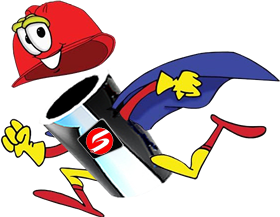Bimetallic Composite Pipe
Read more
ASTM A532 Class I Type A, also known as Ni-Hard 1, is an abrasion resistant material used in applications where impact is also a concern as the wear mechanism.
Good for both wet and dry applications, Ni-Hard 1 should also be considered if there are low or medium dynamic stresses. The as-cast hardness is typically 500 BHN depending on the section thickness of the casting, and it has been used in everything from cyclones in the mining industry to rollers in steel mills.
Ni-Hard 1 is the least expensive wear material, but over the last 10 years many users of this material have been changing to ASTM A532 Class II and III materials due to their improved properties.
ASTM A532 standard has issued the chemical and hardness requirements for abrasion-resistant cast iron material grades, type A, B, C, D. Designation Ni-Cr-HiC, Ni-Cr-LoC, Ni-Cr-GB, Ni-HiCr, and Cr-Mo.
| Element | Minimum (%) | Maximum (%) |
|---|---|---|
| C (Carbon) | 2.8 | 3.6 |
| Mn (Manganese) | - | 2.0 |
| Si (Silicon) | - | 0.8 |
| Cr (Chromium) | 1.4 | 4.0 |
| Mo (Molybdenum) | - | 1.5 |
| Ni (Nickel) | 3.3 | 5.0 |
| Property | Value |
|---|---|
| Density lb/in³ (g/cm³) | 0.27-0.28 (7.6-7.8) |
| Thermal Conductivity Btu/hr·ft·F (W/m·K) | 8.6-17.3 (15-30) |
| Coefficient of Thermal Expansion Ɛ/F(Ɛ/C)X10⁶ average between 50-800F | 4.5-7.1 (8-1.8) |
| Melting Temperature (F) | 2300 F |
| Modulus of Elasticity (GPa) | 24-26 (169-183) |
| Transverse Strength Ksi(MPa) | 70-90 (500-620) |
| Tensile Strength Ksi(MPa) sand cast | 40-50 (280-350) |
Ni-Hard is not typically chosen for its corrosion resistance properties. For development of a passive film on the surface, which will impart moderate corrosion resistance, the metal matrix must have more than 12% chromium dissolved in it.
Ni-Hard does not have this amount of chromium dissolved in its matrix. The higher chromium alloys (and Ni-Hard 4) have improved corrosion resistance compared to Ni-Hard 1.
| Feature | ASTM A532 Class I Type A (Ni-Hard 1) | ASTM A532 Class II Type D |
|---|---|---|
| Chromium Content | 1.4-4.0% | 18-25% |
| Nickel Content | 3.3-5.0% | Not required |
| As-Cast Hardness | 550-690 BHN | 450-550 BHN |
| Hardened | Supplied in hardened condition | >650 BHN |
| Corrosion Resistance | Limited | Good |
| Machinability | Limited | Can be machined and faced for fit purposes, but cannot be drilled and tapped |
| Cost | Least expensive wear material | Higher cost than Class I Type A |
Class I Type A (Ni-Cr-HC)
Class II Type D (Cr-Mo-HC)
| Feature | Class I Type A | Class II Type D |
|---|---|---|
| Primary Alloy Elements | Nickel-Chromium System | Chromium-Molybdenum System |
| Impact Resistance | Higher (Composite Structure) | Standard |
| Corrosion Resistance | Superior | Moderate |
| Typical Applications | Mining crushers, Cement plants | Coal handling, Power generation |
Selection Guidelines:
Class I Type A
Martensitic matrix with chromium carbides and nickel-enhanced toughness
Class II Type D
Hyper-eutectic structure with molybdenum-stabilized carbides

When you partner with Sunny Steel, you can stop worrying about meeting deadlines thanks to our responsive and timely service. You'll also say goodbye to unnecessary shopping around. Instead, you'll get white glove service from an expert who understands your needs and can get you the materials you need quickly.
